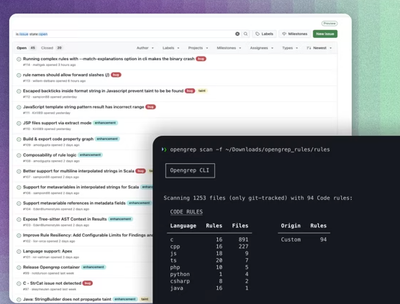Battery
A configurable machine that turns classnames into CSS.
(Documentation is in progress)
Purpose
I started working on Battery in an effort to have a way of auto-generating documentation for a custom Atomic CSS library. That eventually grew into a much more interesting tool which had the potential for so much more than auto-generating docs.
There's some distance between what Battery is capable of now and what I want it to be capable of in the future, but I'm hoping to narrow that gap sooner rather than later. Here's a list of things it can currently do, followed by a list of features that I'd love to add or extend out of this project.
Current features:
- Customizable Atomic CSS library
- Generate a CSS file with only the classes you use (currently only available as a Webpack plugin but I would love to extend this to as many languages as possible)
- Auto generate docs (done via a React App that's in beta)
- CLI to parse static HTML and JSX files for classnames and output a CSS file
Dream features:
- Linter powered by Battery config to guide and enforce your conventions
Ecosystem
This repo is the brain of Battery, but it's meant to be used in conjunction with other tools. The most fleshed out of those tools are
- Battery Webpack Plugin: Parse your JSX for classnames to be sent to be processed by Battery and only generate the CSS you use in your App
- Battery Docs App
Prop Configs
These are one of the two core aspects of Battery's configuration. Your propConfig's will house the vast majority of your naming convention.
Examples
The following are some examples of propConfig's and what Battery will output given class names that match those configs.
Note: Some of these examples include references to Plugins which are the other core aspect of Battery. Feel free to read through this section and gloss over the plugins part as we will be covering them in detail later (or if you can't way, jump ahead and checkout how Plugins work)
text-align
const textAlign = {
cssProperty: 'text-align',
propName: 'text',
values: {
separator: '-',
values: {
left: 'left',
center: 'center',
right: 'right'
}
}
}
const input = ['text-left','text-center','text-right']
.text-left { text-align: left; }
.text-center { text-align: center; }
.text-right { text-align: right; }
position
const position = {
cssProperty: 'position',
propName: '',
values: {
values: {
static: 'static',
relative: 'relative',
absolute: 'absolute',
fixed: 'fixed',
sticky: 'sticky'
}
}
}
const input = ['static', 'relative', 'absolute', 'fixed', 'sticky']
.static { position: static; }
.relative { position: relative; }
.absolute { position: absolute; }
.fixed { position: fixed; }
.sticky { position: sticky; }
z-index
const zIndex = {
propName: 'z',
cssProperty: 'z-index',
enablePlugin: 'integers'
}
const input = ['z1', 'z20', 'z-10', 'z-999']
.z1 { z-index: 1; }
.z20 { z-index: 20; }
.z-10 { z-index: -10; }
.z-999 { z-index: -999; }
background-color
const backgroundColor = {
cssProperty: 'background-color',
propName: 'bg',
separator: '-',
values: {
separator: '-',
values: {
transparent: 'transparent'
}
},
enablePlugin: 'colors'
}
const input = ['bg-red', 'bg-green', 'bg-blue', 'bg-transparent']
.bg-red { background-color: #FF0000; }
.bg-green { background-color: #00FF00; }
.bg-blue { background-color: #0000FF; }
.bg-transparent { background-color: transparent; }
Configuration Options
prop : string (required)
This sets which CSS property being configured by the object. This will be the property part of the CSS declaration in the final atomic class.
propName : string
This sets the identifier in the classname to tell Battery which property the class is targeting.
propSeparator : string
This sets the separator between the propName and the value identifiers in the class.
values : object
This object allows you to manually set up values for your property. This can be used for keyword values as determined by the CSS spec, or it can be used when you can't easily create a plugin to handle generating these values.
Example
const alignItems = {
cssProperty: 'align-items',
propName: 'items',
values: {
separator: '-',
values: {
'start': 'flex-start',
'center': 'center',
'end': 'flex-end'
}
}
const input = [
'items-start',
'items-center',
'items-end'
]
.items-start { align-items: flex-start }
.items-center { align-items: center }
.items-end { align-items: flex-end }
values : object
The keys in this object set the indicator on the class and the value sets the value for the CSS declaration to be paired with the property set by the prop on the root propConfig
separator : string
This sets the separator between the propName and the value identifiers in the class. Note: You can optionally rely on the propSeparator if you want all of your values to be separated using the same separator.
enablePlugin : string
This allows your classnames to take a predefined set of values based on a plugin in your config. The string in this section must match the configured name of a plugin in your Battery Config.
pluginDefault : boolean
A propConfig can to be set as the pluginDefault. This allows Battery to determine which property to set when it can't find a propName. As the example below shows, this can be useful in the case of something like text-color if you prefer not to have an indicator like text to denote what the color is being applied to.
const color = {
cssProperty: 'color',
propName: '',
values: {
values: { transparent: 'transparent' }
},
pluginDefault: true,
enablePlugin: 'colors'
}
const input = ['red', 'green', 'blue', 'transparent']
.red { color: #FF0000; }
.green { color: #00FF00; }
.blue { color: #0000FF; }
.transparent { color: transparent; }
allowedValues | disallowedValues :string[]`
These two options let you put constraints on a propConfig to disallow some or most values from generating classes.
An example of where this can be useful is with a color plugin. This plugin could contain a lot of different colors, but not all of them should be used for all properties that accept a color value. If there are colors that you have determined should not be used for text due to legibility issues, you can add an array of disallowedValues to your propConfig so that Battery will filter those out before it generates the final list of classes
The allowedValues option could be leveraged in the case where you only want to allow a small number of values from a plugin. A good example of this is plugin that outputs hard pixel values. These values are often used to magically position or size something. Using the following, you could limit the possible values to just a tiny subset for a property: allowedValues: [1px, 2px, 3px]
Plugin Configs
Plugins allow you to interpret various kinds of patterns in your classnames and output the desired CSS from matching with those patterns.
Value Plugins
Value plugins are used to convert parts of a classname into the value of a CSS declaration.
Type: pattern
This type of value plugin is designed to take a regex and will search the value section of the classname for a match. The matching value can the be outputted directly or processed before being set as the value in the atomic class.
Example plugin: Integers
const integersPlugin = {
name: 'integers',
type: 'pattern',
valueRegexString: '-?[0-9]{1,4}'
};
const flexShrink = {
cssProperty: 'flex-shrink',
propName: 'shrink',
enablePlugin: 'integers'
};
const input = ['shrink2', 'shrink-1'];
.shrink2 { flex-shrink: 2; }
.shrink-1 { flex-shrink: -1; }
Example plugin: Length Units
const lengthUnitsPlugin = {
name: 'lengthUnits',
type: 'pattern',
valueRegexString: '-?[0-9]{1,4}',
valueModifiers: [
{
name: 'percent',
indicator: 'p',
modifierFn: (value) => `${value}%`,
sampleValues: ['20', '50', '100', '-10', '66']
},
{
name: 'pixel',
indicator: 'px',
modifierFn: modifierFn: (value) => `${value/16}rem`,
sampleValues: ['1', '2', '3', '-2', '-5']
}
]
}
const width = {
cssProperty: 'width',
propName: 'w',
enablePlugin: 'lengthUnits'
}
const positionTop = {
cssProperty: 'top',
propName: 't',
enablePlugin: 'lengthUnits'
}
const fontSize = {
cssProperty: 'font-size',
propName: 'f-size',
propSeparator: '-'
enablePlugin: 'lengthUnits'
}
const input = ['t10px','t-25p','w50p','f-size-16px']
.t10px { top: 0.625rem }
.t-25p { top: -25% }
.w50p { width: 50% }
.f-size-16px { font-size: 1rem; }
Configuration Options
Note: There are certain configuration options that are only available or necessary for specific plugin type's
name : string
This sets a unique name so that you can enable a specific plugin inside of a propConfig
type : string
This give Battery an indication of how and when it needs to process a given part of a classname. The following are the accepted strings for plugin types.
patternlookupclassnameatruleclass
valueRegexString : string
This is a regex in the form of a string which is used to find valid matches in a classname's value portion. This matched value can be passed to a value modifier to process the value before it finally gets set as part of the declaration
valueModifiers : object[]
The value modifier array can contain a set of what are essentially sub plugins. These are used to transform a value based on a modifier on the end of that value.
Selector Plugins
These plugins allow you to modify the selector of a given atomic class. This can be used for everything from adding psuedo selectors like :focus and :hover, to creating a hover target pattern or something more complex.
Atrule Plugins
Class Plugins
Documentation Config Options
Battery is intented to be used for more than generation. Your configs can also contain documentation. The following are all options that are used in the Battery Docs App.
propGroup : string
This groups certain properties under one heading so they can be found together in the Docs UI.



